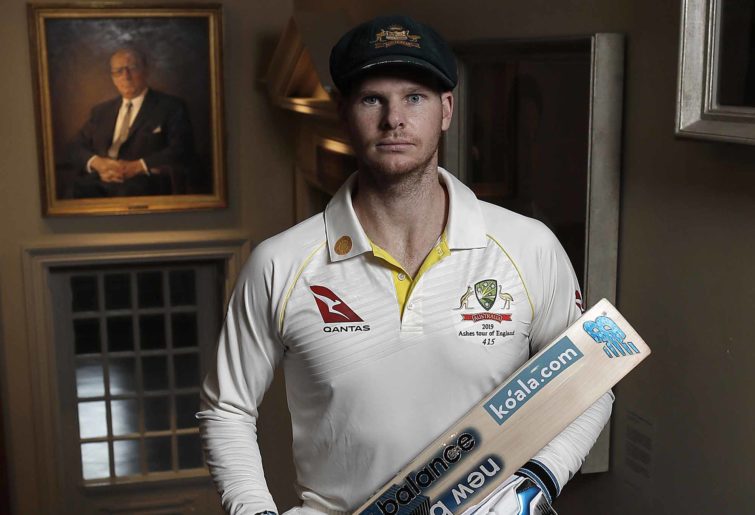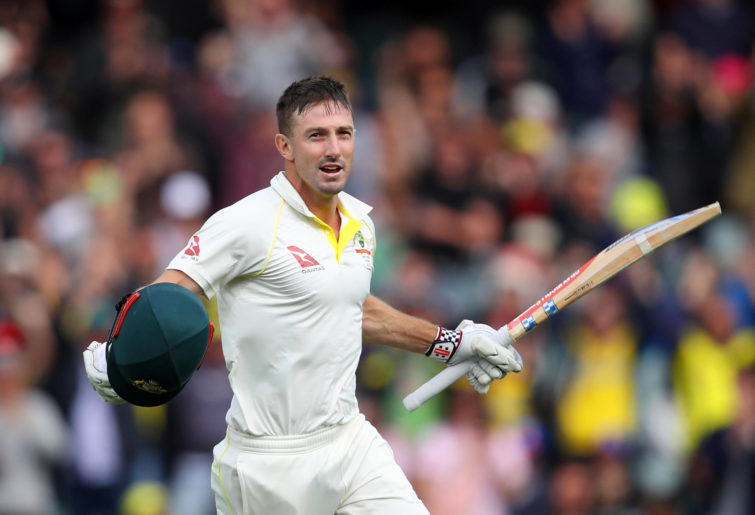Ross Aird
new author
Roar Rookie
Opinion
Assuming Josh Hazlewood can’t recover from his hamstring tear picked up at Optus Stadium and is replaced by the evergreen Peter Siddle for the Boxing Day Test, a very rare milestone will be achieved on December 26 against New Zealand.
No debutants will have been selected in any of the Test matches Australia played in 2019. You read that correctly: no Test debutants this year.
The last time that happened, we were all extremely relieved the Y2K bug didn’t result in the end of the world and Australia celebrated an incredible home Olympic Games, exceeding all expectations. The country also had an extremely settled cricket team in 2000.
Since 2001, Australia have brought in new Test players every year until 2019, when none have been selected. How many have joined the list of Australian Test players? Seventy-five in all, so on average, four players a year are brought into the cauldron of Test cricket for the closest examinations of skill, temperament and technique.
So if you’re a keen up-and-coming cricketer with your eye on a baggy green, you’ll have to be one of the four chosen ones out of the thousands who play cricket every weekend around the country will get the call up. Yep – you count ‘em on one hand.
So how did our Test selectors perform over the past 20 years? Based on my assessment, they get it right roughly 40 per cent of the time. What’s more interesting is that in the ten-year period from 2000 to 2009, they got it right 45 per cent of the time and in the past ten years (2010 to 2019) they got it right 39 per cent of the time.
What’s also interesting is that while more data, computer analysis and resources are available these days for selectors, it does not seem to be improving their ability to choose who will succeed at the highest level.
So how do we assess if someone has been a successful Test selection?
Some are obvious. Steve Smith, David Warner, Pat Cummins and Nathan Lyon are automatic ticks.

(Photo by Ryan Pierse/Getty Images)
But what about Ryan Harris? He only played 27 Tests but I have him in the successful category due to his heroics in England and especially in South Africa.
The number of players chosen for Australia each year ramped up dramatically after 2007 and increased until the 2019 drought. Things changed at the end of 2007 when the big three Justin Langer, Shane Warne and Glenn McGrath all retired at the end of an Ashes clean sweep and selectors threw the doors open and handed out baggy greens like ice creams on a hot day.
In the ten years from 2000 to 2009, only 29 players were selected. However in the past ten years, that number has jumped to 46. Results haven’t improved.
So which years where the good ones and which years were duds in the past decade?
Let’s start with 2010: Ryan Harris, Tim Paine, Steve Smith and Peter George (yep I have no idea who he is either but I double checked and he played one Test match). The first three need no discussion – three out of four, 75 per cent strike rate.
Compare that to the big year for selectors, 2011, when they brought in ten new faces. That’s almost a whole cricket team. There were some wonderful choices who will go on to be hall of famers: Nathan Lyon, Pat Cummins, Mitchell Starc and David Warner. But there were some big misses too: Michael Beer, Trent Copeland and Ed Cowan didn’t manage to bother scorers too often and were quickly dismissed from the team.
A couple sit on the fence: Shaun Marsh and James Pattinson. There have been plenty of articles written about the Shaun Marsh experiment. He is possibly the most frustrating player Australian fans have ever had to cheer for. Dizzying highs and despairing lows. I’m going to be kind and stamp Marsh as successful given he scored six Test centuries and played 38 Tests, however his seemingly never-ending run of low scores and an average of 34 doesn’t stack up.

(Photo by Cameron Spencer/Getty Images)
For James Pattinson, the jury is still out. He’s played some good games but not really done enough to cement his place. However I’m giving him a pass mark. He’s still very much in the frame for selection and is often 12th man. So 2011 delivered ten selections, seven hits, three misses, 70 per cent strike rate. You’d take that any day of the week.
The year 2012 wasn’t a great one for selectors. Australia brought in Matt Wade (successful), Rob Quiney, John Hastings and Jackson Bird. Wade was brought in as a keeper, did well, was dropped, became a very good batsman and came back into a very stable line-up after a strong Ashes campaign in 2019. He even rolled his arm over the other day at a very respectable 130 kilometres per hour. The others of 2012 had limited impact and faded quickly from memory. One from four, 25 per cent strike rate.
Selection is not an exact science, but you have to question what was going through the selectors’ minds in 2013, which was worse than 2012. Australian cricket was misfiring on all cylinders in the early 2010s and selectors were twitchy and looking for miracles rather than developing players.
We’d been absolutely trounced at home in 2010-11 by England, South Africa won in Australia in 2012, and we’d been flogged four-nil in India in 2013. Selectors were desperate. Enter Moises Henriques, Glenn Maxwell, Ashton Agar, James Faulkner and George Bailey. None would go on to cement a place in the team.
Maxwell was a T20 player unsuited to Test cricket, Henriques and Faulkner were a throw of the dice to get our Freddie Flintoff, and Bailey was a fantastic player who just missed his chance. Five selections, five fails, zero per cent strike rate.
After being thrashed at home by South Africa in 2015-16, the selectors also grabbed a box full of baggy greens and mailed them to anyone with a cricket bat or ball in their garage.
The years 2016 and 2017 were very poor for selectors. In 2016, Jon Holland, Callum Ferguson, Joe Mennie, Nic Maddinson and Matt Renshaw were brought in. Five players, five starts, five fails. Peter Handscomb is borderline, but probably a fail. Zero per cent again.
Likekwise in 2017, Hilton Cartwright came and went, so did Cameron Bancroft. In two years we saw eight new faces, eight fails, zero per cent again.

(Photo by Ashley Vlotman/Gallo Images/Getty Images)
While it’s too early to tell whether the players from the past two or three years will go on to have major Test careers, the signs are very good for some in the class of 2018. In that year, the rolling of the dice continued, but luck started to turn for the selectors.
Another seven players were given a shot. Travis Head has shown lots of talent early and is firming as a solid choice batting at number six. And Marnus Labuschagne – the first concussion sub in Test history – has leaped out of the blocks. He leads the world in Test runs in 2019 and has just knocked up three centuries in a row. A superstar in the making.
Jhye Richardson made a promising debut at the start of the year but unluckily got injured at the wrong time. Too early to tell. Chadd Sayers, Aaron Finch, Marcus Harris and Kurtis Patterson all felt like right place, right time selections with none showing any real claim on a baggy green before being selected and are unlikely to see a return in the foreseeable future, so at this stage they will be classed as poor choices by selectors. The year 2018 delivered three from seven, 43 per cent strike rate.
It feels like selectors are giving more opportunities but giving players shorter time to find their feet in Test cricket. Is it our short attention spans? Is it due to the media pushing for change?
Do we all remember how many Test innings it took Steve Waugh to score his first hundred? Forty-two. It took 41 innings in 26 Test matches before he hit a magnificent 177 not out in Leeds in his 42nd. Steve Waugh would not have had his magnificent career in today’s high-scrutiny environment and would have been given the axe.
This begs the question for selectors: do they pick and stick or chop and change? Given you only have to be correct on average 40 per cent of the time, and can have complete shockers every couple of years, it probably doesn’t really matter.